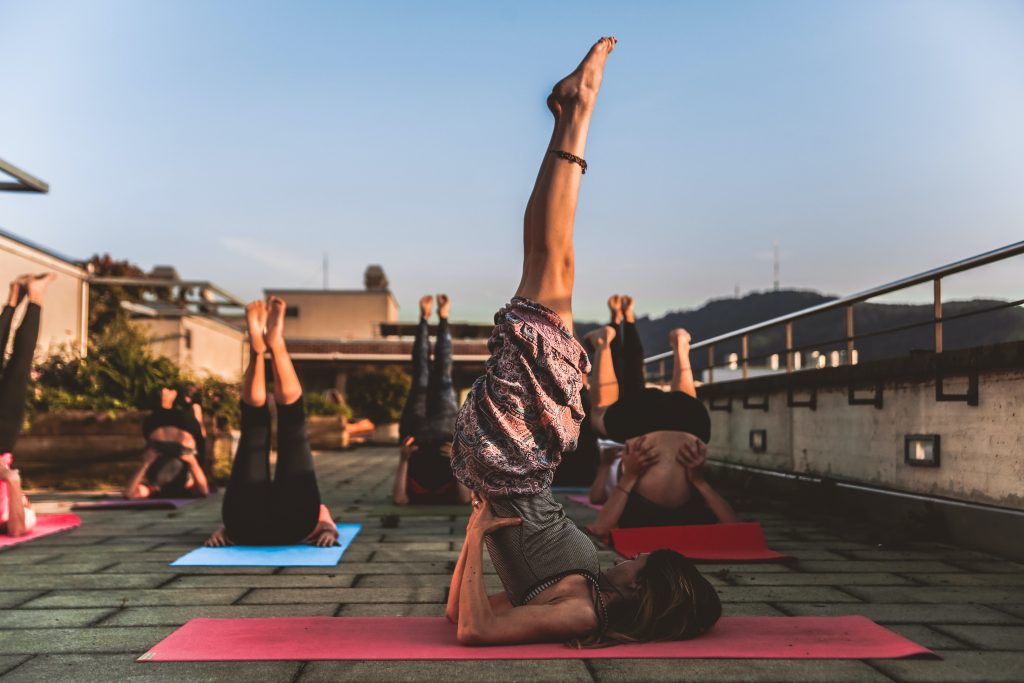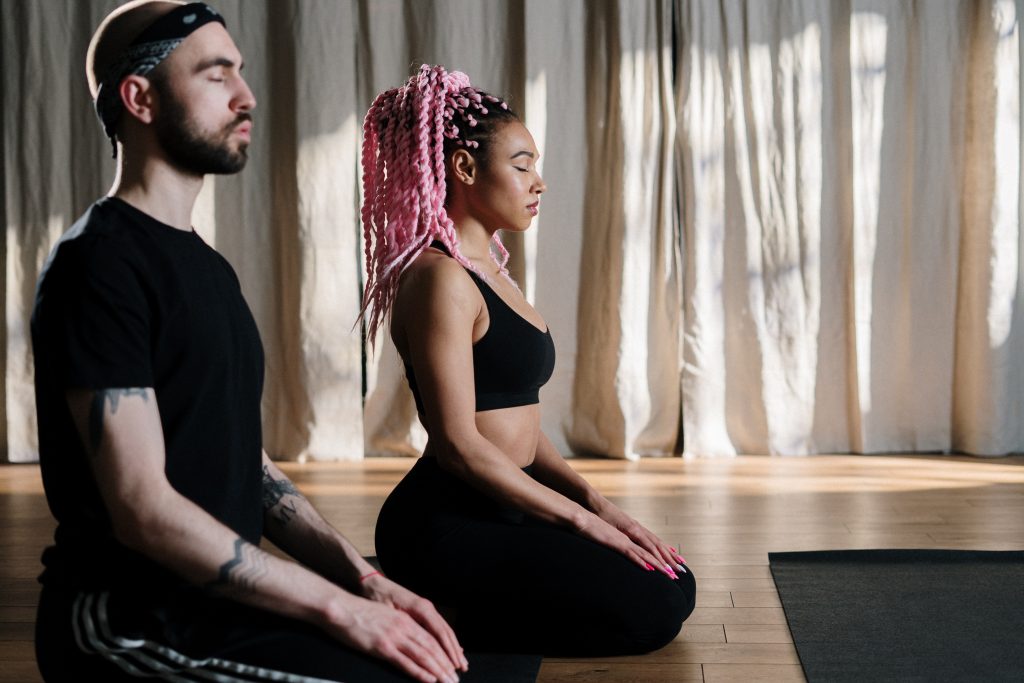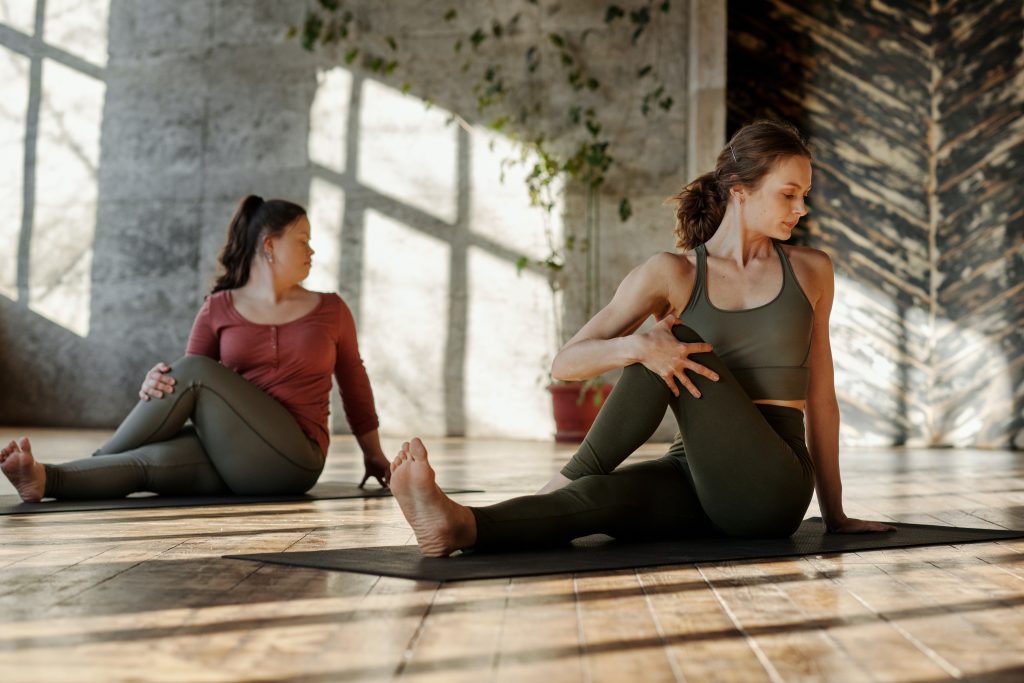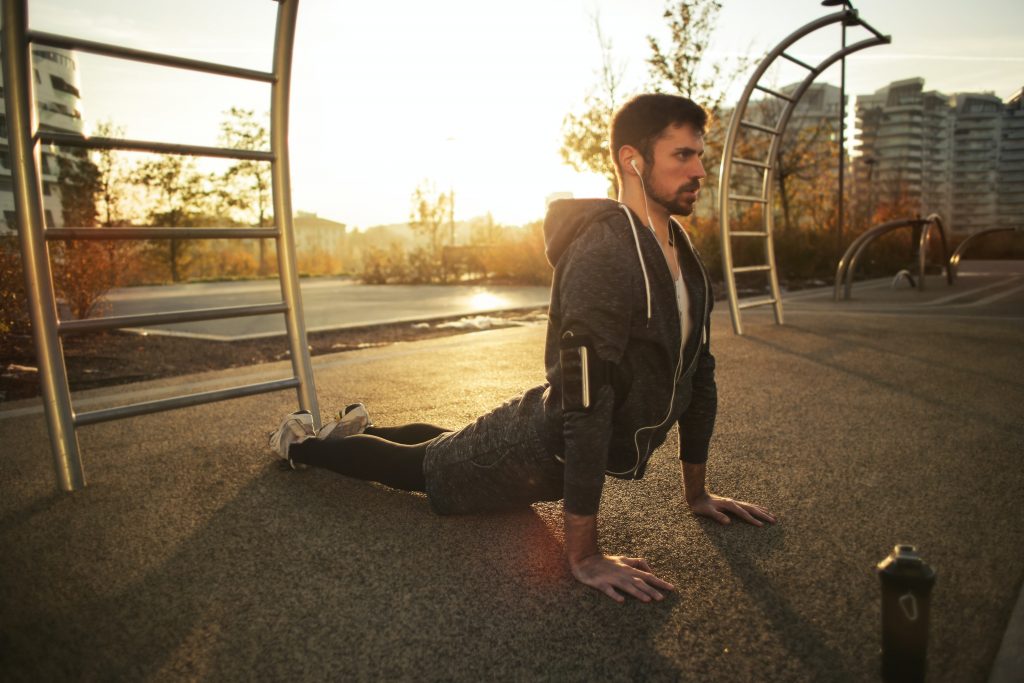There are few people out there who haven’t heard about the benefits of doing yoga for both your physical and mental health.
But perhaps you have gone along to a class and it was just completely not what you expected, so you decided that it is not for you?
Not so fast. The thing is that there are scores of different types of yoga. You might even say that there is a yoga for everyone.
But if you were looking for a dynamic yoga class to work up a sweat and you turned up to a yin yoga session, you’d be understandably disappointed. If you were looking for a relaxing session to clear your mind and align your spine, that Ashtanga yoga class might have been downright scary.
So, the best way to get started with yoga is to know your different types of yoga, and then pick a style that promises deliver.
Of course, that doesn’t mean that there is just one style for you forever. As you learn about yoga and develop a “practice”, you may find yourself being drawn towards other types of yoga, whether that be dynamic and athletic, deep tissue massaging, or mantras and meditation.
In today’s article we are going to explain the ten most popular different types of yoga, what to expect from a class, and who each type of yoga might appeal to.
We’ll also remind you about the amazing benefits of yoga to your physical and mental wellbeing, and go through some of the vocabulary that you are likely to hear in a yoga class to make it a bit easier to follow along.
If you are looking for any of the essential equipment that you need for yoga (and yes there are a few things), check out our complete Yoga section. We have in depth reviews of some of the most popular yoga gear in the UK, including yoga pants, yoga starter kits, even more specific tools like yoga headstand tools and more.

10 Different Types of Yoga
Below is a list of the ten most common types of yoga, and what to expect from each practice.
Some are dynamic, using flow between positions to give you an aerobic workout as part of your practice. Others are slower and involve holding positions for longer to get deep into the muscles.
There are practices that focus principally on physicality, and other that focus more on meditation and spirituality.
Ashtanga Yoga
Ashtanga is one of the most popular and physically challenging forms of yoga. It involves a set series of movements, with modifications to simplify or deepen the practice, that are always done in a set order.
The series involves athletic movements and challenging bodyweight postures, which are combined with the breathing.
Traditionally, people would get together to practice the series together, but go at their own pace and difficulty level. Everyone is expected to know the series, so that they can go through the series together.
Ashtanga is a challenging for of yoga that is not for beginners, but is a good choice if you are ready to take the physical side of your yoga to a more challenging level.
Vinyasa Yoga
Vinyasa yoga was actually adapted from Ashtanga yoga in the 1980s and is considered one of the more athletic yoga styles.
The name Vinyasa means “to place in a special way” and refers to the way that you “flow” between the different poses while coordinating with your breath.
Where Vinyasa is very different from Ashtanga is that there is no set series of moves that you should be doing with each practice. Instead, an instructor will choreograph different flows to focus on different things, whether that he hips and shoulder, relaxation and meditation, or a nice energy boost.
This type of yoga is ideal if you are looking for a serious aerobic and bodyweight workout, but you want to be able to focus on what you need now, rather than sticking to a strict sequence.
Hatha Yoga
In Sanskrit, the term hatha simple refers to all the different physical postures of yoga. It is often used to refer to any type of yoga that uses physical poses, as opposed to yoga based on meditation or breathing.
However, when a class is marketed as a Hatha Yoga class, it means that you can expect a fairly relaxed class where you go through the basic poses without the dynamic and athletic movements that are associated with Ashtanga and Vinyasa.
Hatha yoga is great for beginners as you can learn the basic yoga postures and how to do yoga breathing without the added stress of aerobic activity.
Yin Yoga
Yin yoga is also a slow-paced style in which you spend a lot of tie seated in the different positions, breathing into your muscles to deepen the stretch and focusing on meditation.
This is another practice that is great for beginners who are just learning to poses and to connect their breath with the movement.
It can also be a good practice if you are dealing with physical strain, perhaps from sitting in front of a computer all day, as it seriously relaxes the muscles.
Iyengar Yoga
Iyengar yoga is designed specifically to work on posture and alignment. So, rather than flowing through different positions, you spend a lot of time in one position, focussing on your breathing, and making minute adjustments to improve your posture and position.
While the workout is not aerobic, holding the poses works into the muscle and ligature in a way that leaves the body feeling open, relaxed, and strong after a session.
This is a good type of yoga if you are working through an injury, have spinal alignment issues, or you just have a methodical personality.
Bikram or Hot Yoga
So, the main characteristic of Bikram yoga, which we also call hot yoga, is that you do it in a room that is heated a bit like a sauna. The room will typically be heated to 105 degrees with 40 percent humidity.
The yoga performed includes a series of 26 postures, with each performed twice. The idea is that you will be able to go deeper the second time around.
The benefits of hot yoga over other practices is that the heated room allows you to deepen your practice as your muscles are more flexible, your heart lumps faster, and your lungs increase in capacity. The deeper breathing that is required can also make it easier to connect the movements and the breath. Plus, the heat also promotes weight loss.
But hot yoga is not for beginners, as it is easy to suffer from heat exhaustion during the practice, or injure yourself as you push too hard. Again, this is a practice that is better for experienced yogis looking to deepen their practice.
Kundalini Yoga
Kundalini is both a physical and a spiritual yoga practice that combines postures with breathing, chanting, and meditation to release energy that feels like it has been caught in the body, in particular around the spine.
Physically it works the core as you combine sharp outward breathes with invigorating postures. The breathing works the core from the inside out.
This can be a good type of yoga when you are interested in getting deeper into the spiritual side, but you don’t want to sacrifice time working on the physical elements of yoga that you may already have started to develop.
Restorative Yoga
Restorative yoga is all about winding down at the end of the day so that you can get a better night’s sleep, since good sleep is essential to good physical and mental health.
You spend more time in fewer postures, and many of the postures are modified so that they are more about relaxing and using gravity, rather than using your strength to get into and hold the position.
This type of yoga can be ideal for anyone who suffers from stress or sleeping disorders such as insomnia.
Sivananda Yoga
This type of yoga takes a more holistic approach. It teaches a lifestyle system based on the five yogic principles: proper breathing, relaxation, diet, exercise, and positive thinking.
The physical aspect of the practice is based around twelve basic postures (asanas), coupled with sun salutations and savasana.
But key to the practice is also volunteering, to do almost anything to help others The theory is that serving others is an essential practice to open the heart and diminish selfishness and egoism.
Prenatal Yoga
This one probably doesn’t need much explanation, but it is yoga for pregnant ladies. Yogis will need to adapt their practice during pregnancy, as some of the poses, especially those that twist the core, may not feel good during pregnancy, and could potentially be dangerous.
Nevertheless, pregnant moms are encouraged to keep up with their yoga practice because it involves a lot of pelvic flaw work, and the breathing rituals can also provide an opportunity to bond with the baby.
Aerial Yoga
OK, so this is number 11, but we couldn’t miss aerial yoga. Basically, instead of doing your yoga on a mat on the floor, you do it in a silk hammock suspended from the ceiling.
Maintaining your body in the right position in the air requires lots of core muscle strength, and you can also use gravity in different ways to get yourself deeper into certain postures. Plus, is fun.
Again, if you have a bit of yoga experience, you’ll get more out of this practice. It is easier to modify the poses for aerial yoga if you already know the basic poses.

Benefits of Yoga
No matter which type of yoga you choose, there are serious physical and mental health benefits to developing a practice that works for you.
While the below is just the tip of the iceberg, here are some of the main reasons why it is worth investing your time and energy in yoga.
Yoga is Good Exercise
No matter what type of yoga you choose, it is a good workout. While you might burn more calories when doing Ashtanga or hot yoga, even in a simple Hatha or Yin session, you are strengthening and toning your muscles, especially your core muscles.
One of the great things about a yoga workout is that you can do things at your own pace and difficulty level. So, you can go along for a yoga workout with your super-fit friend, and practice together without feeling like you are completely out of sync.
Yoga is Good for Injury Prevention
If you already exercise a lot, you might think that you don’t need a yoga workout, but it is also fantastic for injury prevention. Yoga works on mobility and flexibility. This means developing the full range of motion for your muscles and joints.
This makes them more supple and adaptable, so you are less likely to do damage to yourself when doing other types of exercise, such as running. You don’t need to get down into full splits or have a perfect backbend to benefit from this. Even a small improvement in range of motion can make a big difference.
Yoga gets you In Tune with your Body
Most of us take our bodies for granted most of the time. As a result, we aren’t always good at picking up on the signals that something isn’t right. This is why we push ourselves too far and get hurt or exhausted, rather than stopping out our limit and letting ourselves recover.
Part of the practice of yoga is getting in touch with our body and knowing what it feels like. This helps us better understand and appreciate the wonderful machine that we are lucky enough to call our own.
Yoga Can Improve Your Mind
A key element of yoga is meditation. You are encouraged to focus on the physicality of your body and your breathing while completing your practice, clearing you mind of other distractions. This is the heart of meditation.
The quieting on the mind that we practice during mediation has been shown to actually change how the brain works, reducing stress and enabling greater positivity. You can read more about the benefits of meditation here.

Yoga Vocabulary
If you go along to a yoga class, you may very well hear a lot of terms that you don’t recognize. Teachers will often use traditional Sanskrit words to refer to many aspects of yoga that don’t have a simple English translation.
Also, while many of the yoga positions to have English name translations, many yoga teachers prefer to use the Sanskrit names For example, did you know that Upward Facing Dog is really called Urdhva Mukha Shvanasana, while down dog is Adho Mukha Shvanasana.
Below are some other important yoga terms that you will hear during any yoga class.
- Asana – general term for the poses and postures used in yoga
- Bandha – these are energetic locks located throughout the body that enable or block energy from flowing, you will often be told to “engage your bandhas” during a class
- Mula banda – pelvic floor lock
- Uddiyana bandha – abdominal lock
- Jalandhara bandha – base of the throat lock
- Bhakti – means devotion and usually refers to a more spiritual yoga class that involved chanting and singing
- Chakra – literally meaning wheel or circle, it is used to refer to energy centres, and we have seven chakras in our bodies running the length of our spine
- Chaturanga – meaning four limbed staff pose, it is the low push up position that you pass through between plank and upward dog
- Drishti – means gaze and it means steadying your eyes in one place to help focus during the practice
- Mantra – words, phrases, or sounds repeated as part of a meditation practice to give the mind something to focus on
- Pranayama – refers to the act of controlling your breath during yoga practice
- Savasana – also called “corpse pose”, it is the final resting pose on the back at the end of a yoga practice
- Surya Namaskar – means sun salutation, which is the sequence of movements used at the beginning of the practice to warm up the entire body
- Tadasana – mountain pose, the simple standing pose that is the core of all standing asanas
- Ujjayi – the type of loud breathing through the nose
- Utkatasana – commonly called chair pose where you reach up with bent knees
- Virabhadrasana – means warrior pose, of which there are a few essential variations

The Verdict
It is no secret that yoga is a fantastic form of exercise. There are no shortage of fitness gurus and celebrities preaching about the power of yoga.
The key to finding the best physical activities and wellbeing exercises for you is always finding something that you love. So, that might mean finding a form or yoga that you love.
Luckily, there are scores of different types of yoga from athletic, to aerial, to relaxing and meditative, so you can find a form of yoga that you will enjoy doing.
What choosing the right yoga classes for you, whether in person or online, also pay attention to who is giving the class and how you feel about their energy. This can have a major impact on your practice. If you find a form of yoga that is in the zone that you like, but you just aren’t enjoying the classes, it can be a good idea to try another teacher.
References

